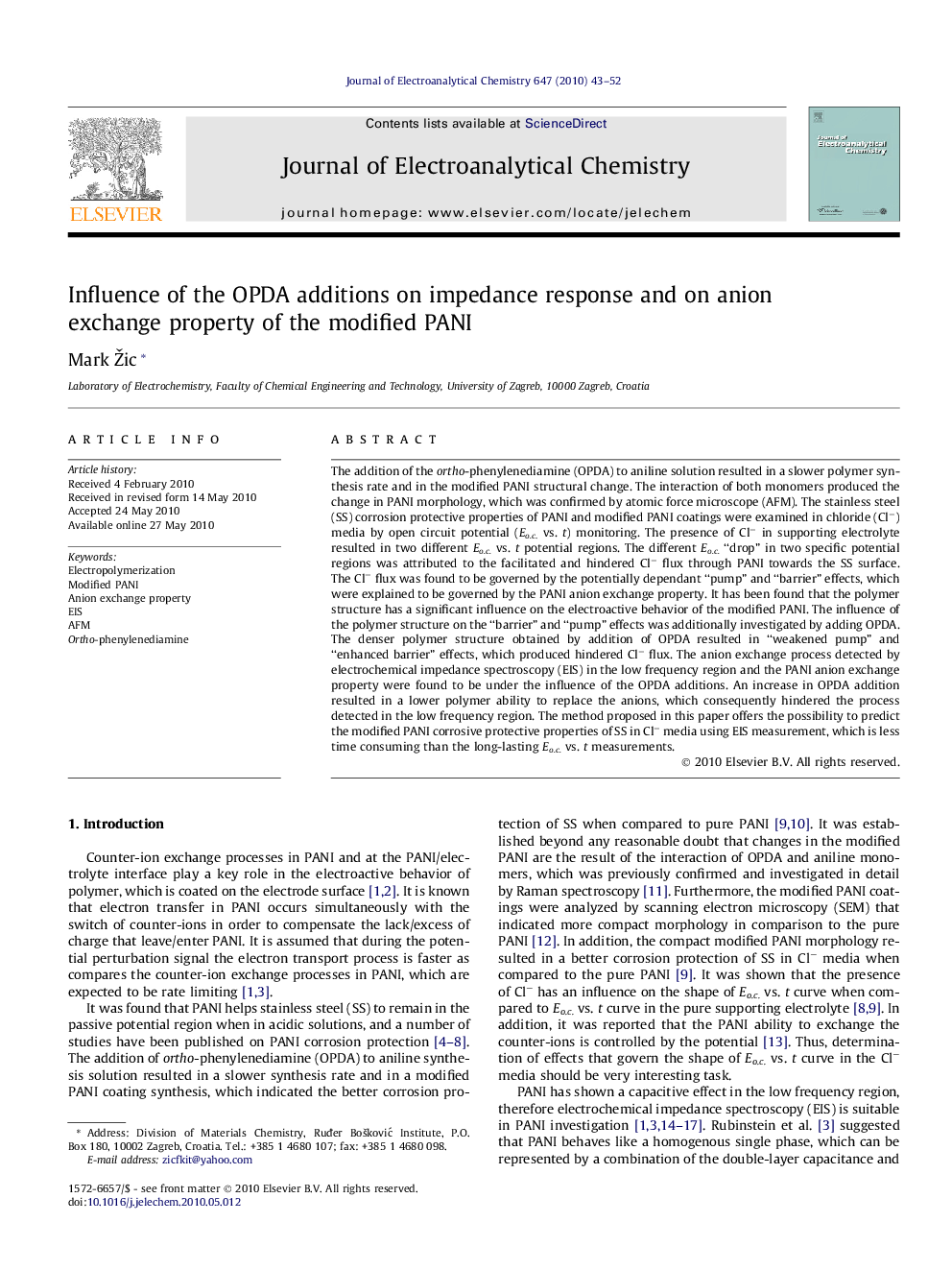| Article ID | Journal | Published Year | Pages | File Type |
|---|---|---|---|---|
| 219853 | Journal of Electroanalytical Chemistry | 2010 | 10 Pages |
The addition of the ortho-phenylenediamine (OPDA) to aniline solution resulted in a slower polymer synthesis rate and in the modified PANI structural change. The interaction of both monomers produced the change in PANI morphology, which was confirmed by atomic force microscope (AFM). The stainless steel (SS) corrosion protective properties of PANI and modified PANI coatings were examined in chloride (Cl−) media by open circuit potential (Eo.c. vs. t) monitoring. The presence of Cl− in supporting electrolyte resulted in two different Eo.c. vs. t potential regions. The different Eo.c. “drop” in two specific potential regions was attributed to the facilitated and hindered Cl− flux through PANI towards the SS surface. The Cl− flux was found to be governed by the potentially dependant “pump” and “barrier” effects, which were explained to be governed by the PANI anion exchange property. It has been found that the polymer structure has a significant influence on the electroactive behavior of the modified PANI. The influence of the polymer structure on the “barrier” and “pump” effects was additionally investigated by adding OPDA. The denser polymer structure obtained by addition of OPDA resulted in “weakened pump” and “enhanced barrier” effects, which produced hindered Cl− flux. The anion exchange process detected by electrochemical impedance spectroscopy (EIS) in the low frequency region and the PANI anion exchange property were found to be under the influence of the OPDA additions. An increase in OPDA addition resulted in a lower polymer ability to replace the anions, which consequently hindered the process detected in the low frequency region. The method proposed in this paper offers the possibility to predict the modified PANI corrosive protective properties of SS in Cl− media using EIS measurement, which is less time consuming than the long-lasting Eo.c. vs. t measurements.
